How to Safely Dispose of Lamp Oil – Protect the Nature!
-
- Last updated:
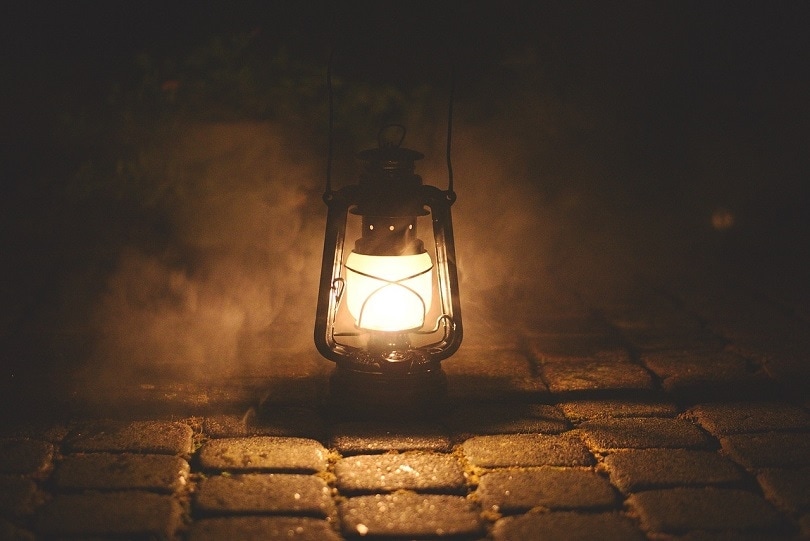

Lamp oil provides the fuel for beautiful and electric-free lights but can be dangerous if ingested or exposed to heat. You must dispose of it correctly to avoid harming the environment and other people around you. Luckily, the steps for disposing of this material are actually really easy. Here’s what to do.
Why You Can’t Throw Lamp Oil in Your Garbage Bin
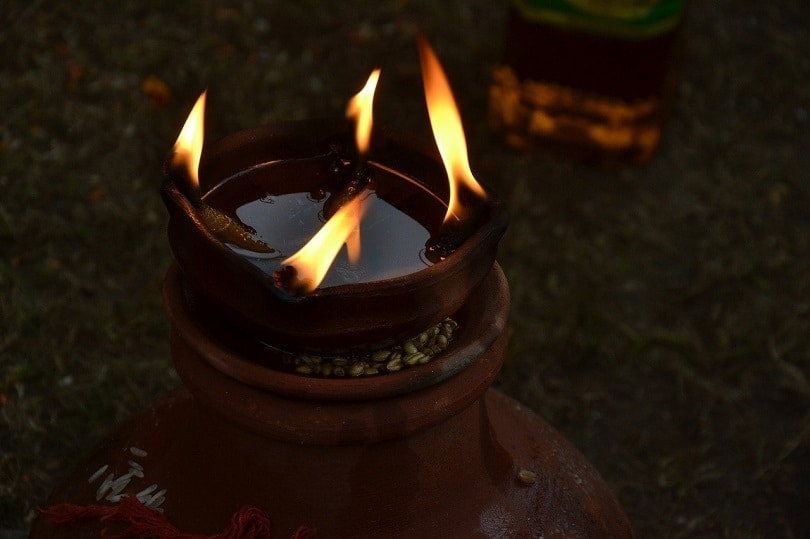
Lamp oil is typically made from kerosene or paraffin. Both of these materials are fuel and made of a variety of chemicals. Whenever the fuel is burned, they aren’t dangerous to you or your family. It is only when they are consumed or exposed to fire that they can be incredibly dangerous.
Because of these safety factors, you cannot put these materials in a landfill. In a landfill, the fuels will contaminate the environment and potentially spread to water sources. There, they can potentially be consumed or start an unintentional fire. This is highly dangerous for everyone in the environment, including people and animals.
What About the Drain?
You also cannot dump lamp oil down the drain. Putting lamp oil in the drain can damage your pipes. Not to mention, pipes have to lead somewhere, and the lamp oil will contaminate the area where it’s deposited.
Safety Tips When Handling Lamp Oil
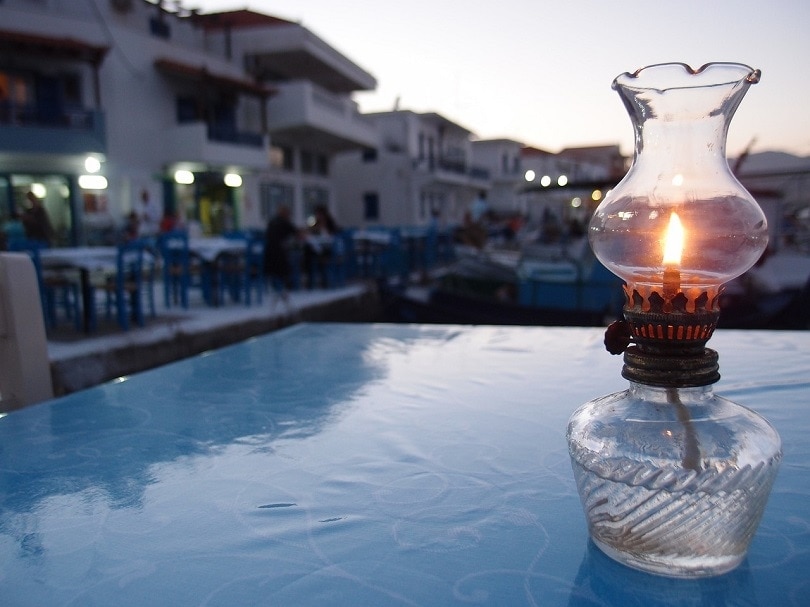
Before disposing of your lamp oil, you must follow a few safety tips. Since lamp oil is fuel, it can be hazardous if you are not careful. Always put your safety first when handling this or any other type of fuel.
Do Not Mix Oil with Other Liquids
Most importantly, do not mix the lamp oil with any other fluid. For example, do not mix lamp oil with gasoline. Though it may be tempting to dispose of all of your household chemicals at one time and in one place, most centers do not accept impure fluids, and they can pose a danger to you and your home.
Wear Safety Gear
Make sure you are wearing the proper safety gear when handling lamp oil. Protective gloves should always be worn when you are collecting the oil. Also, wear long sleeves to protect the rest of your body.
Keep the Oil Away from Children, Pets, or Heat Sources
Make sure that the lamp oil is away from children, animals, or heat sources. This tip is pretty obvious, but we felt we needed to mention it anyways.
Getting Started
Disposing of lamp oil is pretty easy, but there are some things you need to do before the disposal process. This will make it much easier to dispose of the oil correctly and efficiently.
- Safety gear
- Lamp oil container
- Marker
- Excess oil

Prepping for Disposal
With your safety gear on, you must ensure the lamp oil is stored properly. Storing the lamp oil allows you to safely transport and distribute it to a local hazardous waste center. Some containers are specifically designed for storing lamp oil; ensure that your lamp oil is stored in one.
Containers designed for lamp oil ensure the fuel is not ignited during transport. They also keep all of the liquid inside the container so that it does not spill out. Grab a permanent marker and simply label the container “lamp oil.”
How to Dispose of Lamp Oil
Here is how to dispose of your lamp oil once you have finished with the prep stage:
1. See if Anyone You Know Wants Lamp Oil
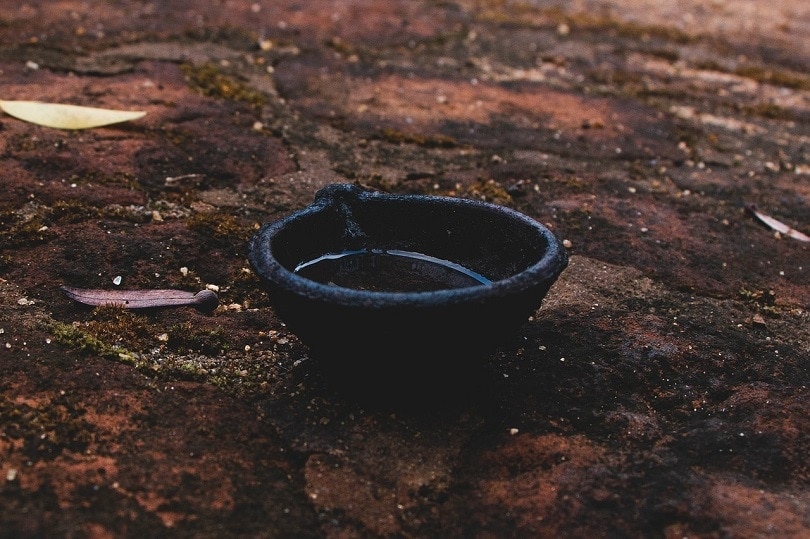
It is always best to not waste any products. Before disposing of your lamp oil, see if a family member or friend needs any oil. This is a great way to save resources and not waste anything in your home. If you know someone who wants the oil, simply take the secured container of lamp oil to their home.
Even if you don’t know anyone who likes lamp oil, the internet can connect you to those in need. For example, a site like freecycle.org can connect you with people in your area who need lamp oil. If you do not know anyone who needs lamp oil, follow the rest of these steps.
2. Find a Disposal Location
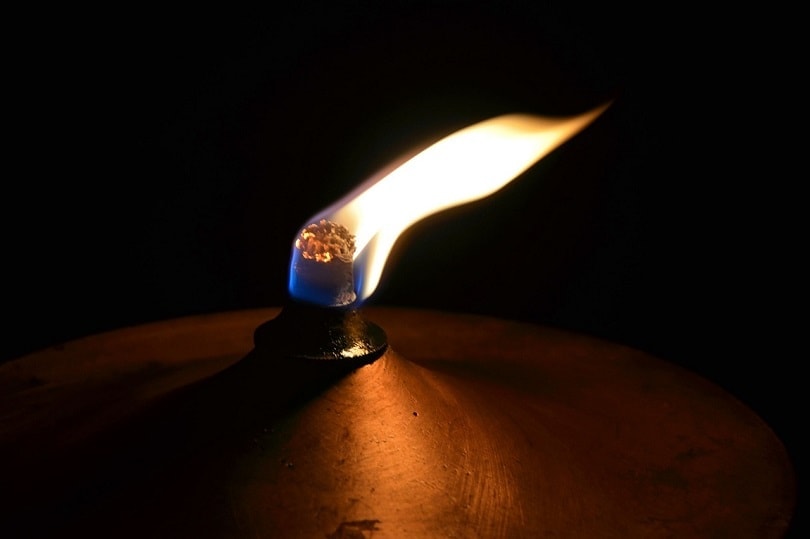
Lamp oil must be disposed of at a proper disposal location. Where you dispose of it will depend purely on your city and area. Looking online is the easiest way to find a facility that collects hazardous chemical waste.
Most larger counties or cities will have a hazardous waste center. The local government often supports these centers. Some smaller towns, however, may not have the resources to collect hazardous waste like lamp oil.
Some stores, gas stations, and auto shops use lamp oil, too. You can learn about their donation process by checking out their website or calling them. Make sure that you talk to the store beforehand to learn about their process.
If you cannot find a store near you to accept your unused lamp oil, call the fire department. They can give you directions on what to do next. Some fire departments may even be able to accept the lamp oil to dispose of it for you.
3. Drop Off
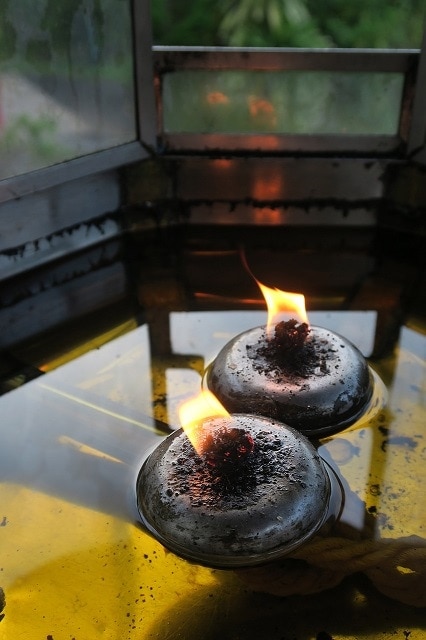
Once you know where to dispose of your lamp oil, you can take it to a facility or request a pick-up. Ensure the lamp oil is pure and not mixed with other fuel types. Most centers will not accept impure lamp oil. Also, only transport the oil in an approved container, and mark it so they know what is inside it.
Follow any other directions that they may give you as well. Some centers have specific hours, regulations, and rules. Instead of dropping off the lamp oil, some organizations or stores may pick it up from your home. If that’s the case, store the lamp oil in a jar and label it clearly for their transport. Before picking up, ask the organization about any fees required for the pickup.
•You might also like:How Hot Does a Propane Torch Get? Are They Good for Welding?

Conclusion
Lamp oil isn’t hard to dispose of, but you can’t just toss it into your bin. Instead, you can take it to a hazardous waste collection center near you. Before dropping it off, ensure the oil is stored in a specialized container and labeled correctly. If the container contains other liquids besides lamp oil, it cannot be taken to a facility. You can also save time and money by looking online for people who need lamp oil. Since you’re willing to part with it for free, most interested parties will have no problem driving to your home to pick it up.
Featured image credit: Designer-Obst, Pixabay
Contents

